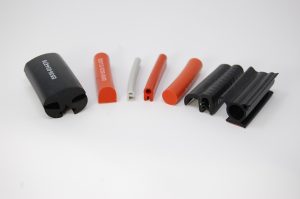Just In-Time Inventory (JIT) is an inventory management strategy where you work closely with your suppliers so that they send you items only when you need them for production. With JIT, you keep the smallest possible amount of inventory on-hand and order and receive items in lot sizes as small as one. JIT requires a high degree of discipline, but leading companies use it as part of lean manufacturing, a production method that maximizes productivity and minimizes waste.
There are many benefits to this approach. For example, JIT can help you to reduce costs, improve quality, and increase competitiveness. When you don’t keep large amounts of stock on-hand, you don’t need as much storage space or as many shelving units or warehouse workers. The risk of storage-related accidents decreases and there are fewer products losses and less dead stock or obsolescent items. Instead of tying up money in excessive inventory, you can conserve cash flow and use working capital for other initiatives.
If JIT inventory management offers benefits like this, why doesn’t every company use it? Maybe it’s because it carries more risks that some businesses can tolerate. Plus, with the current supply chain crisis, JIT can seem like Just Isn’t In-Time Inventory. Even the Big Three automakers, which have long used just in-time methods, are retreating from this inventory management model, as the Wall Street Journal reported. That was before U.S. inflation hit a 31-year high during stockouts and labor shortages.
What Else Could Go Wrong?
By its very nature, JIT limits the number of suppliers you can work with. That’s because you need vendors who are willing to work with you closely and ship small orders on relatively short notice. Whether your orders are frequent or infrequent, many suppliers aren’t interested in meeting demand for low minimum order quantities (MOQs). It can be more expensive for them to do business this way, and smaller sales don’t contribute as much to top-line growth. Typically, you’ll also pay more per unit with lower MOQs.
Plus, JIT inventory means you need suppliers who are close enough to your facility to ensure on-time deliveries and predictable expenses. When you don’t stock what you need within your own facility, any kink in the supply chain can delay shipments or require overnight freight (or even air freight). Whether it’s hurricanes or snowstorms, labor or political unrest, or an outbreak of COVID-19, it seems like you need everything to go just right in order to avoid Just Isn’t In-Time Inventory.
Some of these examples may seem extreme, but Just-In-Time Inventory also depends on your ability to forecast sales accurately. If there’s a sudden change in demand for one of your products, can your suppliers adjust accordingly? Peleton, a manufacturer of at-home exercise equipment, doubled its production capacity to reduce order-to-delivery times; however, its supply chain couldn’t keep up with demand. Recently, the company’s stock dropped by 36% after a disappointing earnings report.
Just-In-Time inventory can also affect your company’s sustainability initiatives. Consider the example of an original equipment manufacturer (OEM) that uses JIT and receives boxes of five different parts for each build. There’s a significant amount of plastic packaging waste and carboard that’s heavily taped may not be recyclable. Each last-mile shipment may also require a truck that’s powered by gasoline or diesel fuel. Plus, there are internal costs to opening, unpacking, and breaking down all of those boxes in your facility.
Just-In-Time Inventory the Right Way
If you’re a manufacturer who needs rubber and plastic parts, Elasto Proxy can help you to minimize the risks that are associated with JIT. Just as importantly, we can help you to realize JIT’s benefits, which include increased productivity, quality, and competitiveness along with reduced costs and waste. To get started, share your sales forecast with us. Even if you can’t predict a sudden rise or fall in demand, we’ll work with you to meet changing conditions and are committed to regular communications.
Let’s say you can forecast all of the rubber and plastic parts that you’ll need for next year. Issue Elasto Proxy a blanket purchase order and we’ll order and receive everything you need so that it’s stored safety at one of our strategically located warehouses in North America or Europe. That means the parts you need won’t be stranded in a shipping container onboard an ocean-going vessel or waiting to be loaded on a ship that’s stuck in some distant port.
Elasto Proxy can then release quantities according to your sales forecasts or on-demand. You won’t have to pay for goods until they ship, and you can order lower MOQs while enjoying the pricing that’s associated with higher quantities. Plus, you won’t have to fill up your facility with more items than you’ll use right away. The benefits don’t end there either. With our kitting and packaging services, we can put all of the parts for a build into a single box that travels from your loading dock to your assembly line.
Would you like to learn more about how you can prevent Just In-Time Inventory from becoming Just Isn’t In-Time Inventory? Talk to our team to get started. Contact us today.











